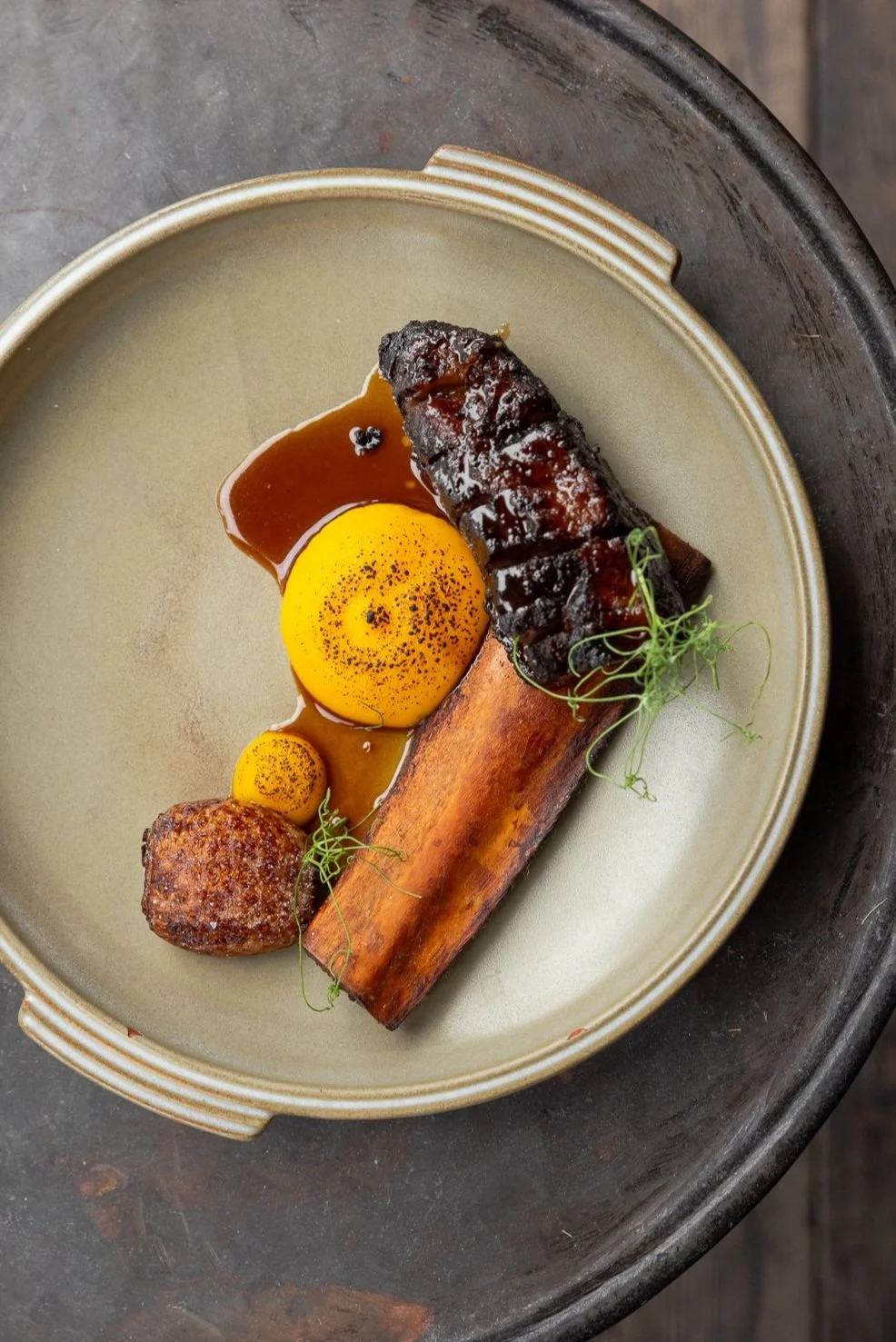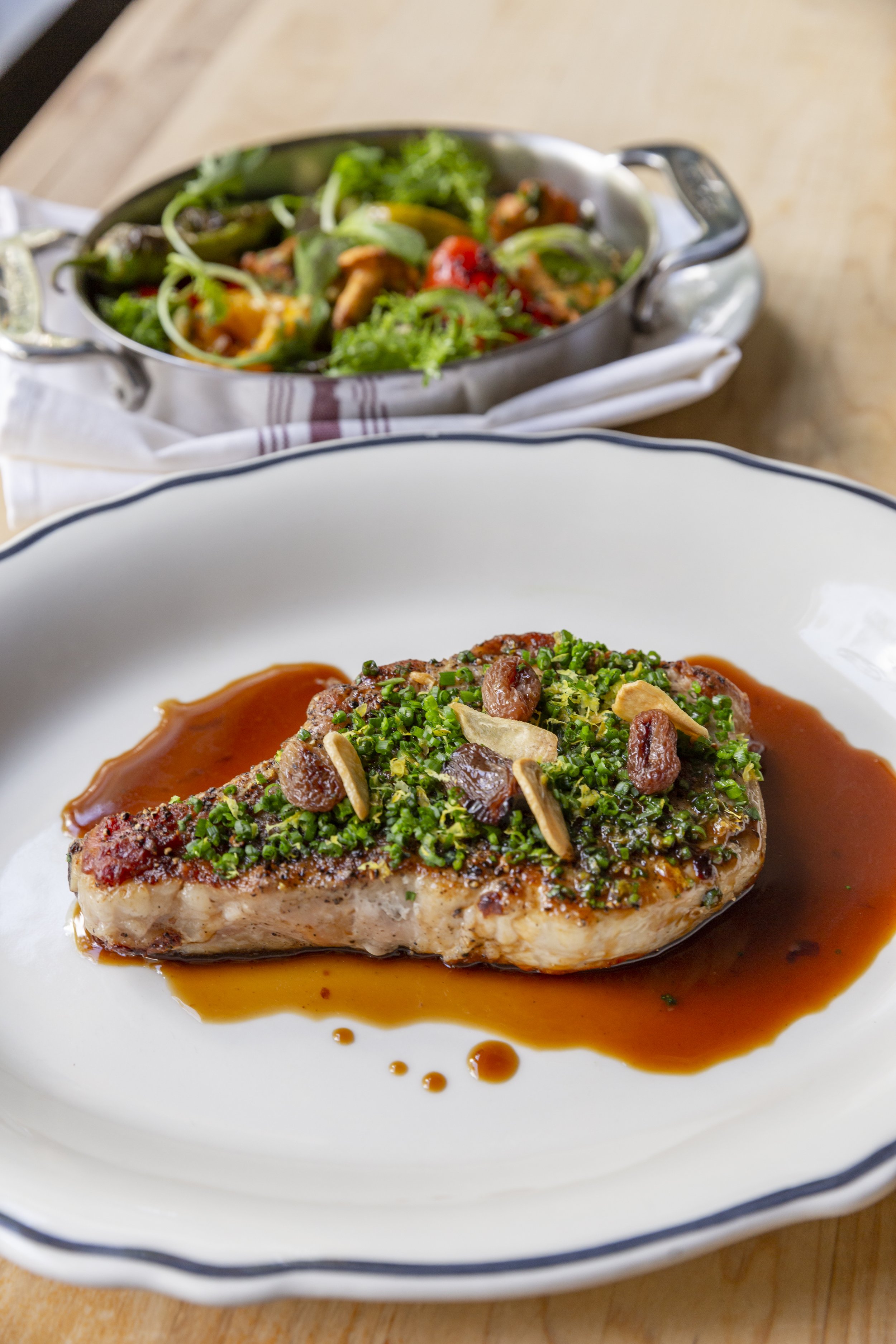Koji-Aged Veal
Chef Jeremy Umansky of Larder | Cleveland
Yield: 3 cultured veal chops
This is a straightforward culturing process and can be done using a wide variety of setups. It requires minimal investment and all the components can be easily cleaned and sterilized. To ensure safe success:
Stick with whole muscle cuts for this process. Don’t use this technique on ground meats unless they are safely cured and the end goal is to create charcuterie. Nearly all pathogenic microbes are surface dwelling and can be eliminated by cooking the cultured meats to the USDA-recommended internal temperatures.
Over-incubating can lead to spoilage. Most meats need no more than 36 to 48 hours.
Work clean. Don’t cross contaminate your work area.
Koji-aged meats should be chilled immediately after a full culture is established. They should be used or frozen within 3 days.
Cultured meats can be cooked a variety of ways, from pan fried to grilled.
Adapted by StarChefs | OCtober 2018
INGREDIENTS
Three ½- to 1-inch-thick veal loin chops
Salt
Sugar
2 teaspoons aspergillus oryzae spores, dispersed
1 cup rice flour, plus additional as needed
METHOD
In a large mixing bowl, season veal with equal parts salt and sugar. Set aside at room temperature for 20 minutes, until the meat starts to weep. In a small bowl, combine spores and flour. Evenly coat the veal in the spore mixture. If needed, use additional flour to ensure the meat is completely coated. Culture the veal at 80°F to 90°F with 90 percent relative humidity for 36 hours. Refrigerate cultured veal until ready to use.
We used veal loin chops here because we feel that it’s a shining example of what accelerated aging can be. We’ve tested and applied this process to llama, lamb, beef, salmon, scallops, chicken, duck, turkey, pork, boar, and venison. In our opinion, the darker a meat, the more delicious it is; beef definitely wins out over chicken. Culture whatever meat you like. There hasn’t been any terrestrial meat that we’ve tested that didn’t properly culture. From coating the meat with rice flour and spores until the incubation is complete, there’s really no difference in the process than when it’s simply grown on cooked rice or other substrates.









